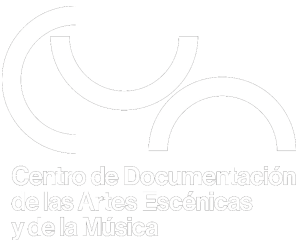The Significance of Iconography in the Print Culture of the Late-Fifteen-Century Music Theoretical Discourse the Theoricum opus musice discipline (1480) and Theorica musice (1492) of Franchino Gaffurio in the Context of His Trilogy. KREYSZIG, Walter Kurt
Tipo de material: ArtículoDetalles de publicación: 2010 New York: Research Center for Music Iconography RCMI,Tema(s):
En: Music in Art : International Journal for Music Iconography Vol. 35, núm. 1,Spring-Fall 2010, p. 53Resumen: RESUMEN: In the examination of the disciplina musicae, iconography has generally focussed on the two principal subdisciplines, that is, musica practica with its concentration on the depiction of musical instruments and related issues of performance practices, and musica theorica with its emphasis on the graphic representationof music-theoretical systems. With the launching of Gaffurio's Theoricum opus music discipline (Napoli, 1480), the first printed volume in a lenghty and venerable music theoretical discourse, which focused largely on the juxtaposition of the Greek systema teleion and the Guidonian system of solmization and hexachords, the study of iconography received a considerable broadening and intensification with regard to the graphic representation and that in a drastically altered context of intent. While the iconographic depictions of both musica theorica and musica pratica continued to exist side by side, the expansion of the music theoretical discourse after 1480 gave rise to a prominent reliance of music theorists on the capturing of details pertaining to aspects of music theoretical systems in iconographic representation. The music theoretical corpus of the eminent musical humanist Franchino Gaffurio, in particular his trilogy comprising the Theorica musice (Milano, 1492), the Practica musicae (Milano, 1496), and The De harmonia musicorum instrumentorum opus (Milano, 1518), attest to this enhancement of the music theoretical discourse through iconographic depictions. The iconographic representations in the form of woodcuts, all of which are intimately linked with Gaffurio's written word, serve as visual summaries of his diversified and, for the most part, dense prose, rich in both detail and overall content.
ArtículoDetalles de publicación: 2010 New York: Research Center for Music Iconography RCMI,Tema(s):
En: Music in Art : International Journal for Music Iconography Vol. 35, núm. 1,Spring-Fall 2010, p. 53Resumen: RESUMEN: In the examination of the disciplina musicae, iconography has generally focussed on the two principal subdisciplines, that is, musica practica with its concentration on the depiction of musical instruments and related issues of performance practices, and musica theorica with its emphasis on the graphic representationof music-theoretical systems. With the launching of Gaffurio's Theoricum opus music discipline (Napoli, 1480), the first printed volume in a lenghty and venerable music theoretical discourse, which focused largely on the juxtaposition of the Greek systema teleion and the Guidonian system of solmization and hexachords, the study of iconography received a considerable broadening and intensification with regard to the graphic representation and that in a drastically altered context of intent. While the iconographic depictions of both musica theorica and musica pratica continued to exist side by side, the expansion of the music theoretical discourse after 1480 gave rise to a prominent reliance of music theorists on the capturing of details pertaining to aspects of music theoretical systems in iconographic representation. The music theoretical corpus of the eminent musical humanist Franchino Gaffurio, in particular his trilogy comprising the Theorica musice (Milano, 1492), the Practica musicae (Milano, 1496), and The De harmonia musicorum instrumentorum opus (Milano, 1518), attest to this enhancement of the music theoretical discourse through iconographic depictions. The iconographic representations in the form of woodcuts, all of which are intimately linked with Gaffurio's written word, serve as visual summaries of his diversified and, for the most part, dense prose, rich in both detail and overall content.
RESUMEN: In the examination of the disciplina musicae, iconography has generally focussed on the two principal subdisciplines, that is, musica practica with its concentration on the depiction of musical instruments and related issues of performance practices, and musica theorica with its emphasis on the graphic representationof music-theoretical systems. With the launching of Gaffurio's Theoricum opus music discipline (Napoli, 1480), the first printed volume in a lenghty and venerable music theoretical discourse, which focused largely on the juxtaposition of the Greek systema teleion and the Guidonian system of solmization and hexachords, the study of iconography received a considerable broadening and intensification with regard to the graphic representation and that in a drastically altered context of intent. While the iconographic depictions of both musica theorica and musica pratica continued to exist side by side, the expansion of the music theoretical discourse after 1480 gave rise to a prominent reliance of music theorists on the capturing of details pertaining to aspects of music theoretical systems in iconographic representation. The music theoretical corpus of the eminent musical humanist Franchino Gaffurio, in particular his trilogy comprising the Theorica musice (Milano, 1492), the Practica musicae (Milano, 1496), and The De harmonia musicorum instrumentorum opus (Milano, 1518), attest to this enhancement of the music theoretical discourse through iconographic depictions. The iconographic representations in the form of woodcuts, all of which are intimately linked with Gaffurio's written word, serve as visual summaries of his diversified and, for the most part, dense prose, rich in both detail and overall content.
No hay comentarios en este titulo.

